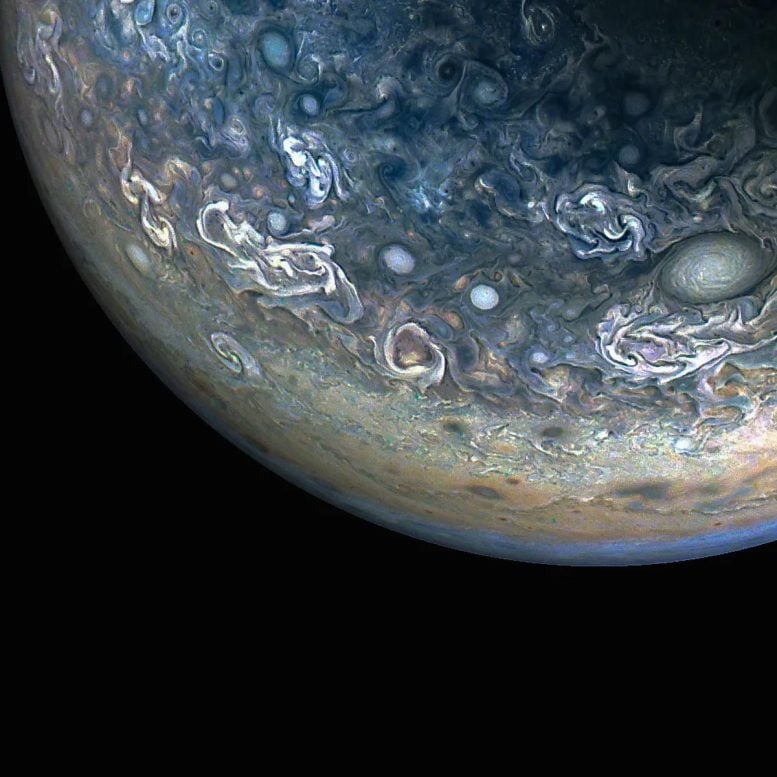
On May 12, 2024, during its 61st flyby of Jupiter, NASA’s Juno spacecraft obtained a detailed image of Jupiter’s northern hemisphere, highlighting chaotic cloud formations and cyclonic storms. Credit: NASA/JPL-Caltech/SwRI/MSSS, Image processing by Gary Eason © CC BY
Juno’s recent flyby captured transformative images of Jupiter’s storms and cloud patterns.
During its 61st close flyby of Jupiter on May 12, 2024, NASA’s Juno spacecraft captured this color-enhanced view of the giant planet’s northern hemisphere. It provides a detailed view of chaotic clouds and cyclonic storms in an area known to scientists as a folded filamentary region. In these regions, the zonal jets that create the familiar banded patterns in Jupiter’s clouds break down, leading to turbulent patterns and cloud structures that rapidly evolve over the course of only a few days.
Citizen scientist Gary Eason made this image using raw data from the JunoCam instrument, applying digital processing techniques to enhance color and clarity.
At the time the raw image was taken, the Juno spacecraft was about 18,000 miles (29,000 kilometers) above Jupiter’s cloud tops, at a latitude of about 68 degrees north of the equator.
JunoCam’s raw images are available for the public to peruse and process into image products at https://missionjuno.swri.edu/junocam/processing. More information about NASA citizen science can be found at https://science.nasa.gov/citizenscience and https://www.nasa.gov/solve/opportunities/citizenscience.
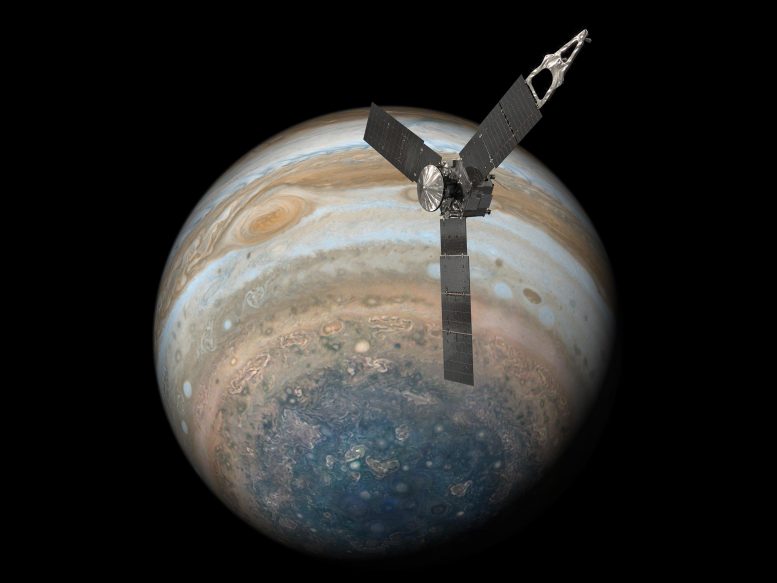
This illustration depicts NASA’s Juno spacecraft soaring over Jupiter’s south pole. Credit: NASA/JPL-Caltech
Juno is a NASA space probe designed to study Jupiter, the largest planet in our solar system. Launched on August 5, 2011, Juno’s mission is to better understand Jupiter’s composition, gravity field, magnetic field, and polar magnetosphere. It also aims to look for clues about how the planet formed, which could provide deeper insights into the early days of the solar system.
The spacecraft is part of NASA’s New Frontiers program, which is responsible for exploring the solar system with frequent, medium-sized spacecraft missions. Juno is powered by solar panels, a notable feature since it operates farther from the Sun than any previous solar-powered probe.
Juno entered Jupiter’s orbit on July 4, 2016, and since then, it has been making close passes over the planet’s cloud tops to collect data. The probe uses a suite of scientific instruments to conduct its investigations, including a microwave radiometer to peer beneath the dense cloud cover and a suite of cameras and sensors to map the planet’s magnetic and gravitational fields.
The findings from Juno have provided unprecedented views into Jupiter’s atmosphere, revealing intricate structures in the planet’s storms, bands, and the composition of its auroras. Juno’s mission, initially set to conclude in 2018, has been extended several times, allowing for continued exploration and discovery around Jupiter.


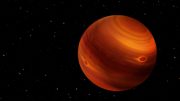


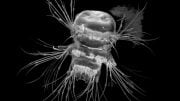

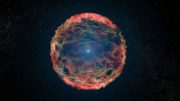

Be the first to comment on "Breathtaking Majesty: NASA’s Juno Captures Jupiter’s Colorful Chaos in Stunning Detail"